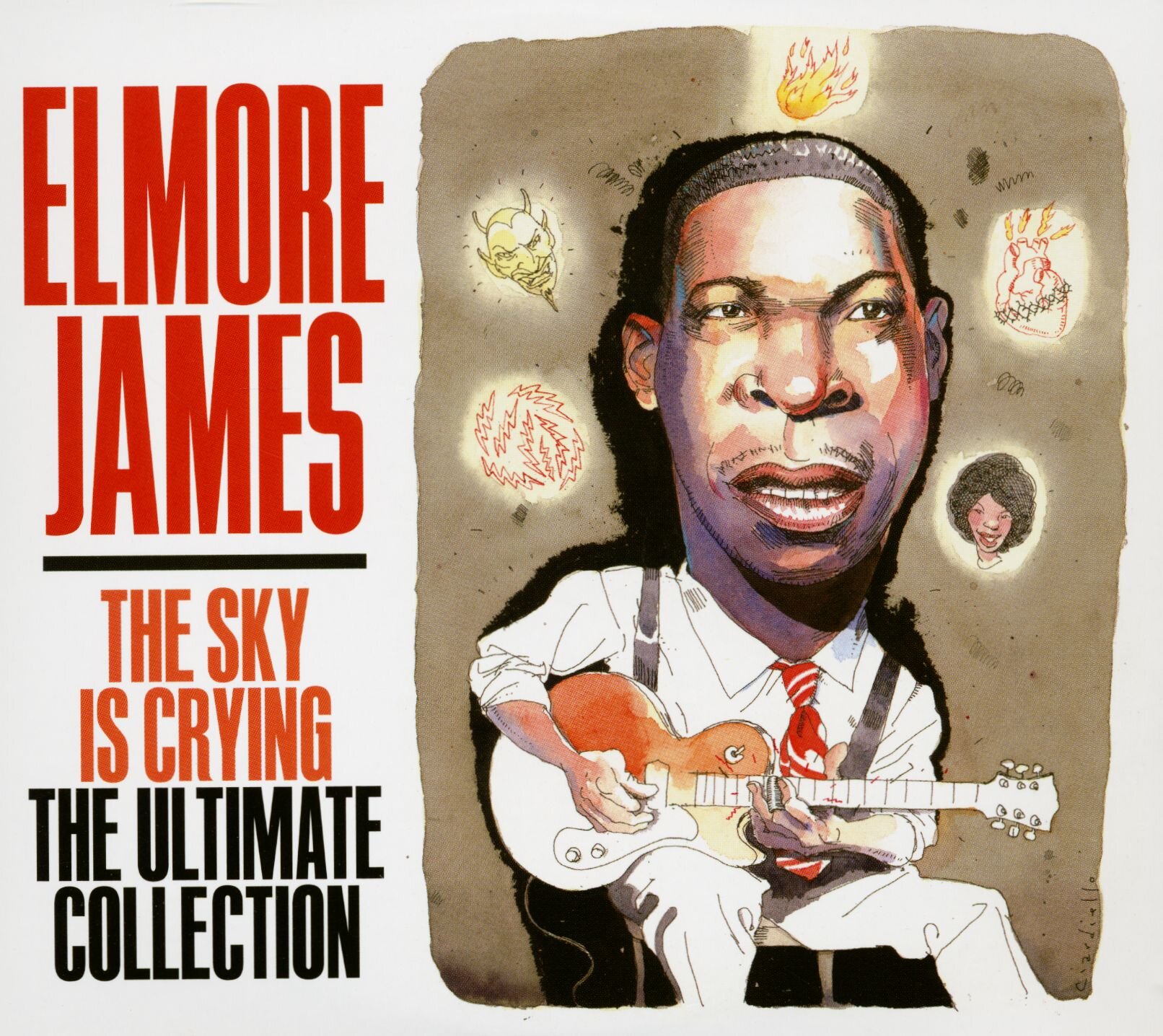Blues Artist of the Week - Elmore James
Elmore James (1918-1963), known as the King of the Slide Guitar, was born in Richland, Mississippi. James was known for his loud amplification and his harsh, rousing voice.
Early Life
Trained as a radio repairman, James used these skills to rework his guitar amplifiers in his spare time. The result was his raw, distorted sound. Not until the heavy rock era of the 1960’s did this sound resurface.
Listening to Robert Johnson inspired Elmore at an early age.
James was a military veteran, and during WWII, Elmore was a Coxswain and participated in the invasion of Guam.
Like many Blues and Jazz greats, he was part of the mass migration from the South to Chicago. He was a fundamental artist transforming and evolving the electronic technology within the music industry.
Blues Career
Elmore James played alongside Sonny Boy Williamson in the ’30’s and then Rice Miller before migrating to Chicago.
After his Chicago migration, James established a beachhead in Chicago’s clubs as one of the most popular live acts and regularly broadcasting over WPOA. He had a productive professional relationship with disc jockey Big Bill Hill.
Utilizing his amplified technology created his unique blues style. Raw is how it is best described. Loud and raw were essential for Elmore. Not only did he deliver raw blues with his guitar his compelling voice was a great compliment. A hollow body modified guitar finalized this unique sound. Once again a sound that wasn’t popular until the rock era.
He did play a wide variety of Blues that was similar to Muddy Waters and Howlin’ Wolf.
Elmore died of a heart attack in Chicago in 1963 at the early age of 45.
Influenced
Like many of the Blues greats, Rock and Roll can credit James as a prominent influencer and creator of the songs that became the bedrock of that genre.
Numerous rock musicians, including Brian Jones of the Rolling Stones and Eric Clapton, adopted his hard-driving style and often recorded his songs. Also, a significant influence on Jimi Hendrix, Fleetwood Mac.
Awards
Blues Hall of Fame in 1980
inducted into the Rock and Roll Hall of Fame in 1992
Start Your Listening Enjoyment:
I recommend two albums to start with.
The Sky Is Crying: The History Of Elmore James
The Rollin’ & Tumblin
Blues Artist of the Week - Willie Dixon
Willie Dixon (1915-1992) was born in Vicksburg, Mississippi, and like many other Blues artists, moved to Chicago in the 1930s.
He is self-described as the “poet laureate of the blues” and “the father of modern Chicago Blues.” At a young age, he sang gospel.
Willie was a bassist, guitarist, singer, arranger, musician rights activist, and producer, but most prolific as a songwriter. He has over 500 song titles to his name. He penned A classic, The Red Rooster, covered by numerous bands, including The Rolling Stones “Little Red Rooster” in 1964.
Like Sister Rosetta Tharpe, who I featured earlier in this series, Dixon left Mississippi for Chicago in 1936.
Willie was a towering man at 6 feet 6 inches tall and over 250 pounds when he moved to Chicago. He was a successful boxer with this frame and won the Illinois State Golden Gloves Heavyweight Championship (Novice Division) in 1937. For a short time, he was also a sparring partner for Joe Louis. He left boxing after a money dispute with his manager and focused solely on music.
Along with Muddy Waters, he was a force in the Chicago Blues scene. As a songwriter, he penned many great songs for Muddy Waters.
Dixon became a relentless advocate for the blues and a major voice for its practitioners in his later years. To help preserve the Blues legacy, Willie Dixon founded the Blues Heaven Foundation.
This Foundation works to preserve the blues’ legacy and secure copyrights and royalties for blues musicians previously exploited.
Willie was inducted into both the Rock and Roll Hall of Fame (1994- posthumous) and the Blues Hall of Fame 1980.
Listening Pleasure
I recommend starting with Willie Dixon – I am the Blues.
Willie’s Home Page
Easy Way to Play your IPhone on Sonos
Connecting your phone or music device to your Sonos couldn't be easier. If you Sonos has a Line In connector you are all set. The Play 5 has one. All you need is a standard headphone jack cord to attach your phone to the Sonos Line-In port.
After you have your phone connected, select Line -In Under the "Select a Music Source" menu.
Within the Line-In menu select your Audio Component that should be your phone. After that you can control playback with all the normal Sonos player controls.
I use this method to quickly listen to podcasts on my IPhone. This is also a quick way to hook up a friend's phone to your Sonos system. You can listen to music this way as well, but it is much easier to load all your music into your Sonos system. I hope this helps.






